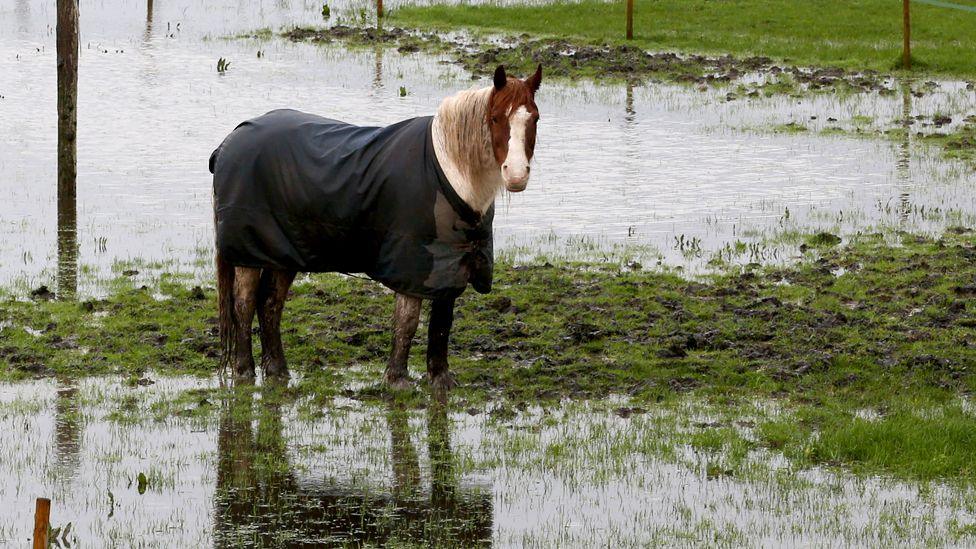The newbuild sites looking to prevent flooding
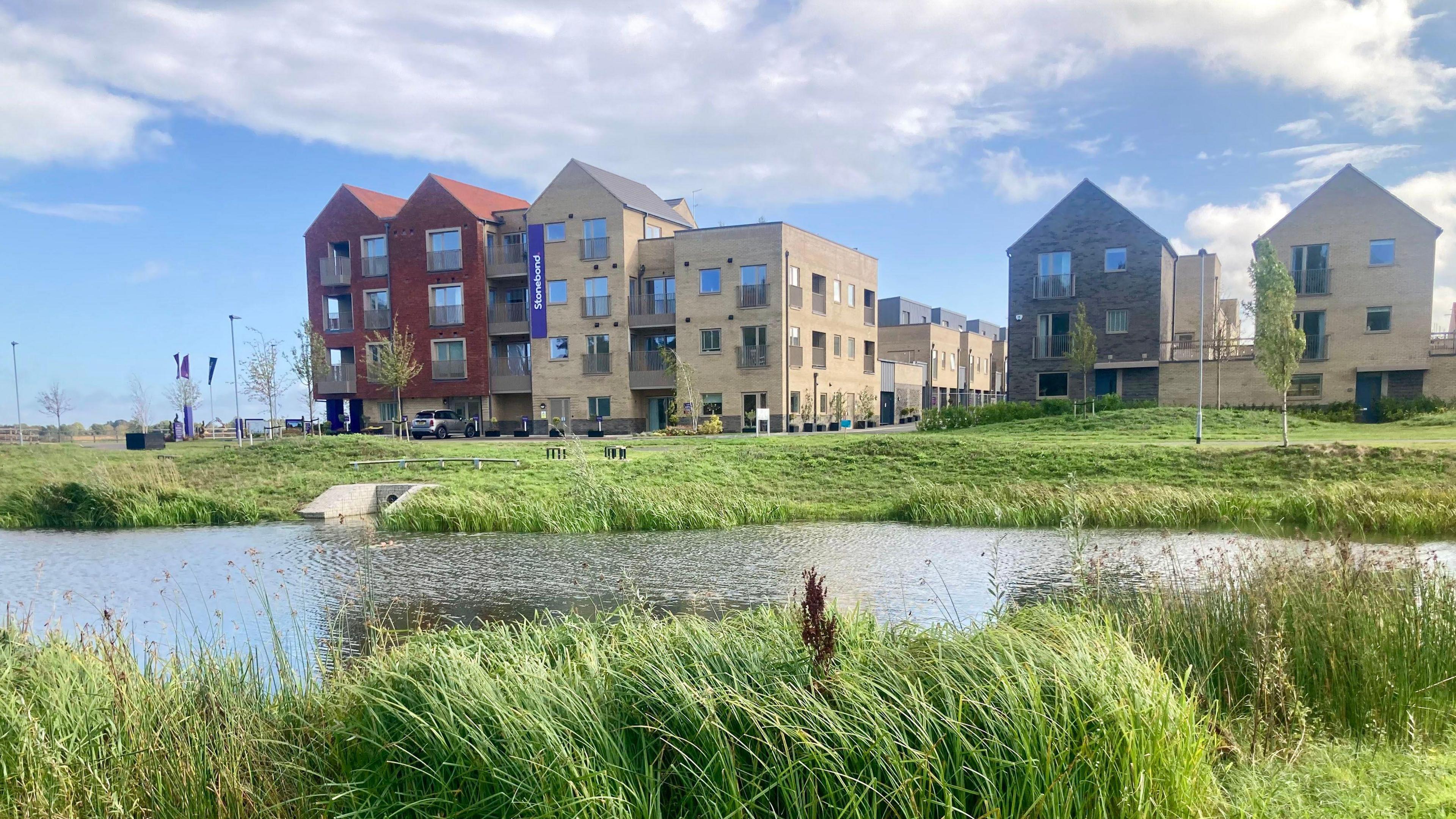
Sustainable drainage systems, like this pond, store water temporarily
- Published
The city of Cambridge is an economic powerhouse, where the pressure to build tens of thousands of new homes for its workers is intense. With climate change causing ever more powerful downpours - as seen in the area last month - how can new housing developments prevent flooding getting worse?
As you enter Waterbeach Barracks, one of the first things you notice is what looks like a large artificial lake.
The new development, just north of Cambridge, has permission to build 6,500 houses, which means a lot of hard, impermeable surfaces like roads and driveways.
So this water feature is more than just ornamental.
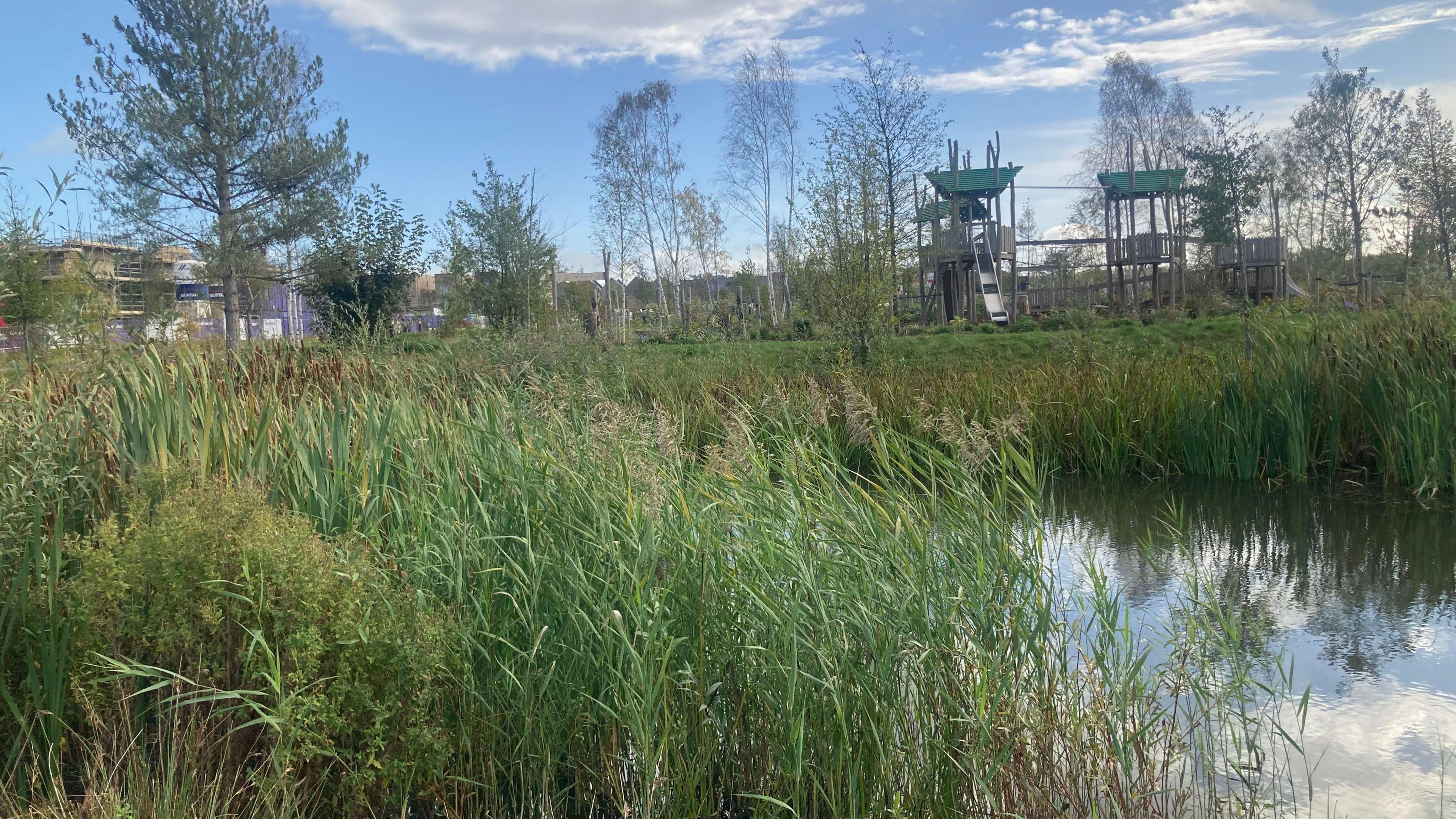
Sustainable drainage systems can also relieve pressure on drains by storing water
"It's an example of a sustainable drainage system," says Elizabeth Orchard, from the Institution of Civil Engineers.
"The pond is actually collecting all the rainwater that's run off the development until it can drain away naturally into the soil, or be carried off elsewhere into pipes upstream.
"That's really important, because that prevents flooding elsewhere.
"Historically, you would have had a lot of surface-water flooding here. It's likely to be one of the reasons the area is known as Waterbeach."
The lake, which is home to bulrushes, ducks and geese, is one of a number of natural solutions being used to keep the surrounding area flood-free.
Woodlands are being created, while native species suited to the soil conditions are also being planted.
"Engineers are one of the culprits of concreting over everything, but [this feature] is where things are heading," she says.
"You build more higher-density developments and that gives more public space, where these nature-based solutions can be available for everyone to enjoy."

Elizabeth Orchard says the flood prevention features can provide attractive places for people to relax in
Sustainable drainage systems (Suds), external use the environment to mimic how the land naturally deals with heavy rainfall and slow the flow of surface water run-off.
They can also relieve pressure on sewers being overwhelmed by heavy rain, preventing untreated sewage entering our rivers and seas.
The need for more housing prompted the previous government to recommend Suds become a legal requirement for new developments from 2024. It is currently being considered by the Labour administration.
'We want to be a good neighbour'
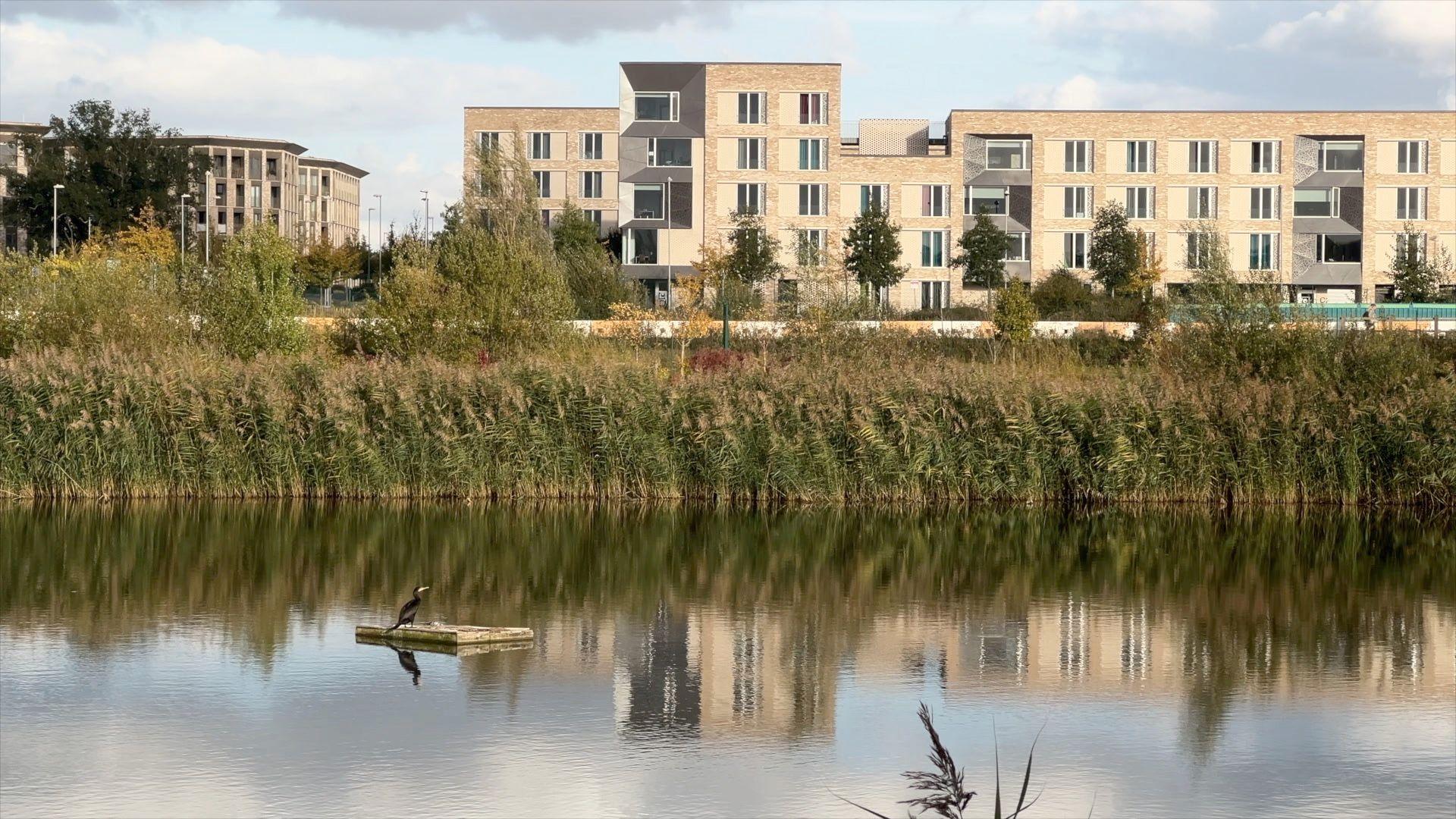
More than a third of this university accommodation site is for green spaces, streams and ponds
Suds have to work hard in places like one of Cambridge's newest neighbourhoods, Eddington.
Head of development, Matt Johnson, must help deliver up to 5,000 new homes, many of them for Cambridge University staff.
"We're going to be here for hundreds of years with our employees living in the houses we have built. So we need to make sure this community is resilient to things like floods," he says.
Built into the development are water management features that, at first glance, are invisible to the naked eye.
But look closer and you will see rain gardens, blue and green roofs and swales, or shallow ditches.
"A blue roof is designed to capture and store a certain amount of water before slowly releasing it," he says.
"A green roof is something that is planted with different kinds of plants and recreates more of a soft landscaping, to soak up that water and slow it down before it reaches the rivers and streams."
The site covers 150 hectares (370 acres). More than a third is being kept back to provide green spaces, ponds and streams that will slow down the flow of water.
"We want to make sure we are a good neighbour," Mr Johnson says.
"We are upstream of the village of Girton. A lot of the interventions we have made have made sure that water has slowed down.
"We've had feedback from residents whose homes have flooded in the past saying they have no longer flooded since the university made its interventions here."
'It's small but makes a big difference'
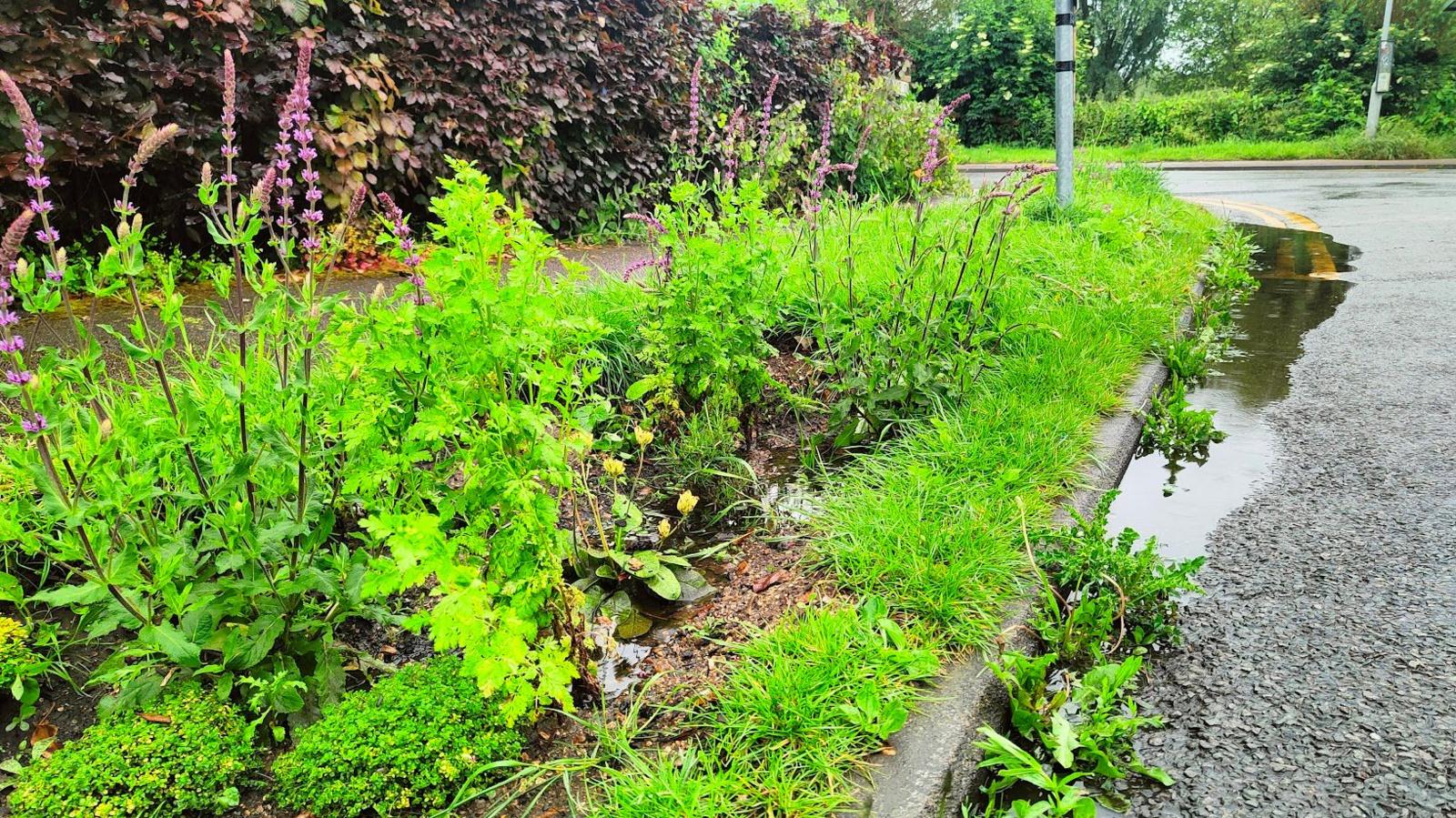
Rain gardens can help relieve pressure on drains by absorbing water
The bigger the Sud, the less likely it is to flood. But can older homes benefit? And if so, how?
Clara Todd, from Water Sensitive Cambridge, says the answer is to create rain gardens.
This is what her team of volunteers has done at the junction where Fen Road meets Fallowfield, by creating three green verges with slots cut into the kerb.
"It's basically a lower area of ground," she says. "We think it has a capacity of taking about 6,000 litres (1,320 gallons) of water off the road.
"During periods of really hard rainfall, the water will come out of the drains and on to the roads... but these rain gardens will take the run-off and put it into the ground instead."
The flower beds also brighten up the area, but the project was only made possible with lottery money.
"We think that all local authorities should have this as a policy. It's small, but it makes a big difference," she says.
Get in touch
Do you have a story suggestion for Cambridgeshire?
Follow Cambridgeshire news on BBC Sounds, Facebook, external, Instagram, external and X, external.
Related topics
You may also be interested in
- Published1 October 2024
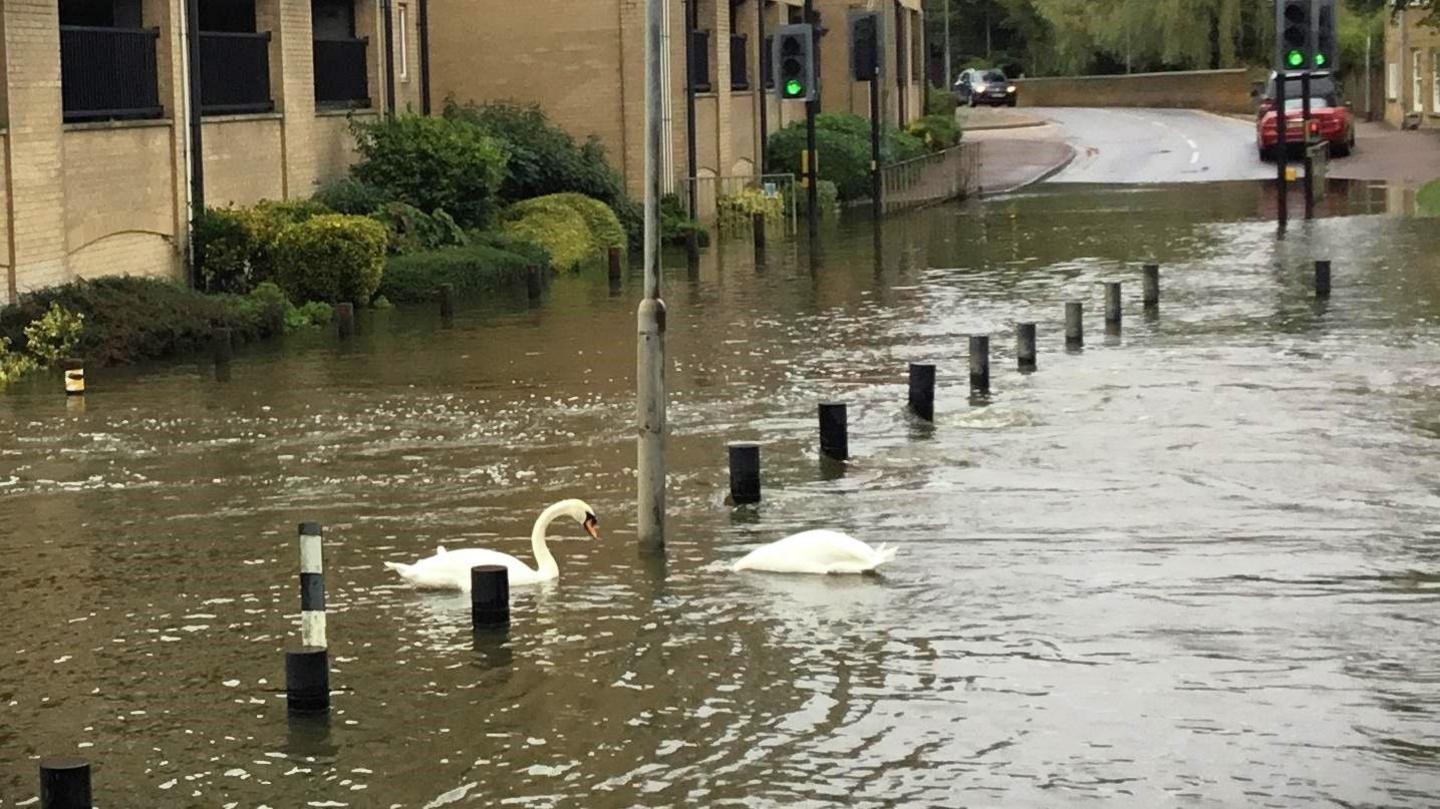
- Published22 May 2024
